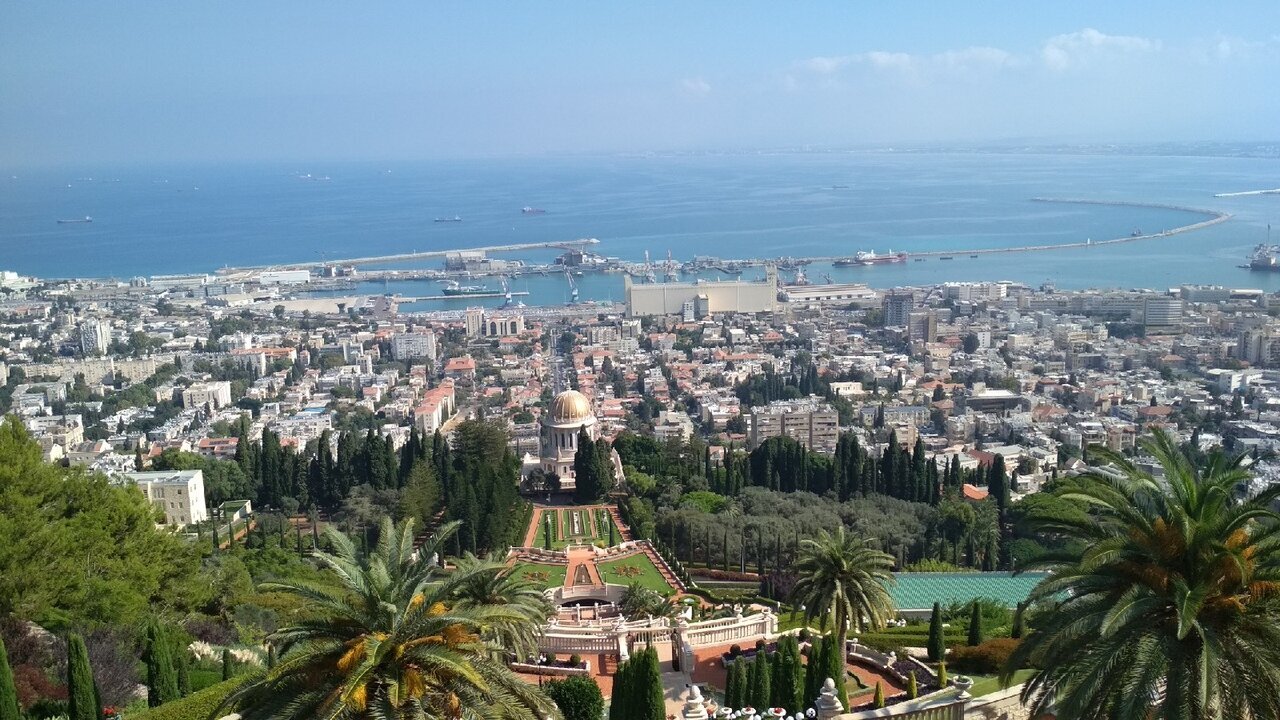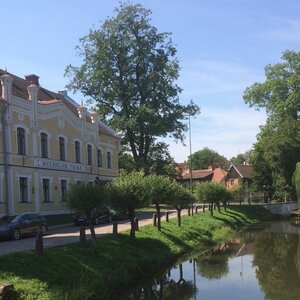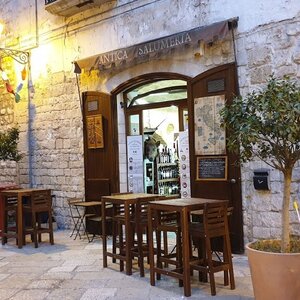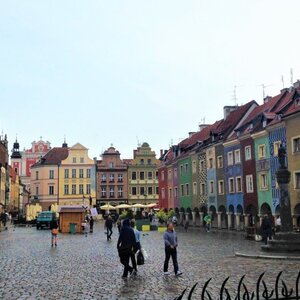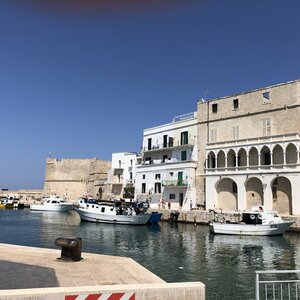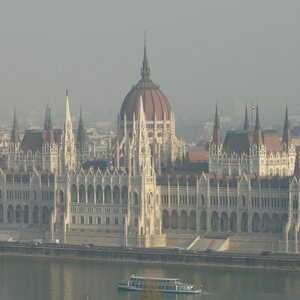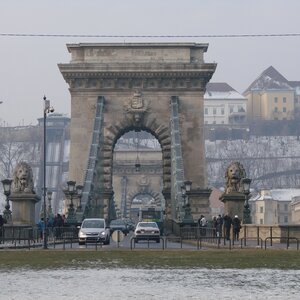Near the city are clean, sandy Mediterranean beaches and the largest natural park in the country. Pilgrims come to see the biblical Mount Carmel with Elijah the Prophet’s Cave, the Carmelite Barefoot Monastery and the World Center for the Bahai religion. The city is perched on a mountain and if you climb a little higher, you can see a wonderful panorama.
You can see the main sights of Haifa in one day, but if you want to relax on the beach — plan at least 2—3 days.
Carmelit Subway.
One line, 6 stations and 2,000 passengers every day — this is the funicular metro, the smallest metro in the world, with a length of 1803 meters. It was started in 1956, and in 1959, the first and only 2 trains passed through the tunnel in Mount Carmel (the subway was named after it). In order for them to separate in the small space, a small two-track «curve» was made.
Today, the Carmelite is one of the city’s main attractions. It has entered the Guinness Book of Records as the world’s shortest underground transportation system. The driver here is more of a controller, and the movement of the 2-car train is controlled by a computer, which also adjusts the interval based on data from the turnstiles and shortens the interval during rush hours.
The trains have no motors, but move along the tracks thanks to steel traction cables. The electric motor as well as the control system are located at the upper station.
- Opening hours: from Sunday to Thursday from 06:00 to 00:00, on Friday and the eve of holidays — from 06:00 to 15:00. On Saturday, trains run only late in the evening: from 20:00 to 00:00.
- Directions: 6 ILS.
- Official Website.
Museum of Japanese Art (Tikotin Museum of Japanese Art)
At the top of Mount Carmel, there is an unusual museum dedicated to Japanese culture — the only one in the Middle East. The Tikotin Museum was founded in 1959 and houses some 7,000 ancient and modern Japanese works — prints, paintings, shoji (traditional partitions).
- Hours of operation are Sunday through Thursday from 10:00 a.m. to 7:00 p.m., Friday from 10:00 a.m. to 1:00 p.m., Saturday from 10:00 a.m. to 7:00 p.m.
- Official Website.
Rosen Garden.
There is a small rose garden next to the Tikotin Museum. In spring and summer it’s full of flowers, but in fall and winter it’s just a cute little garden where you can relax and enjoy the views from the famous mountain.
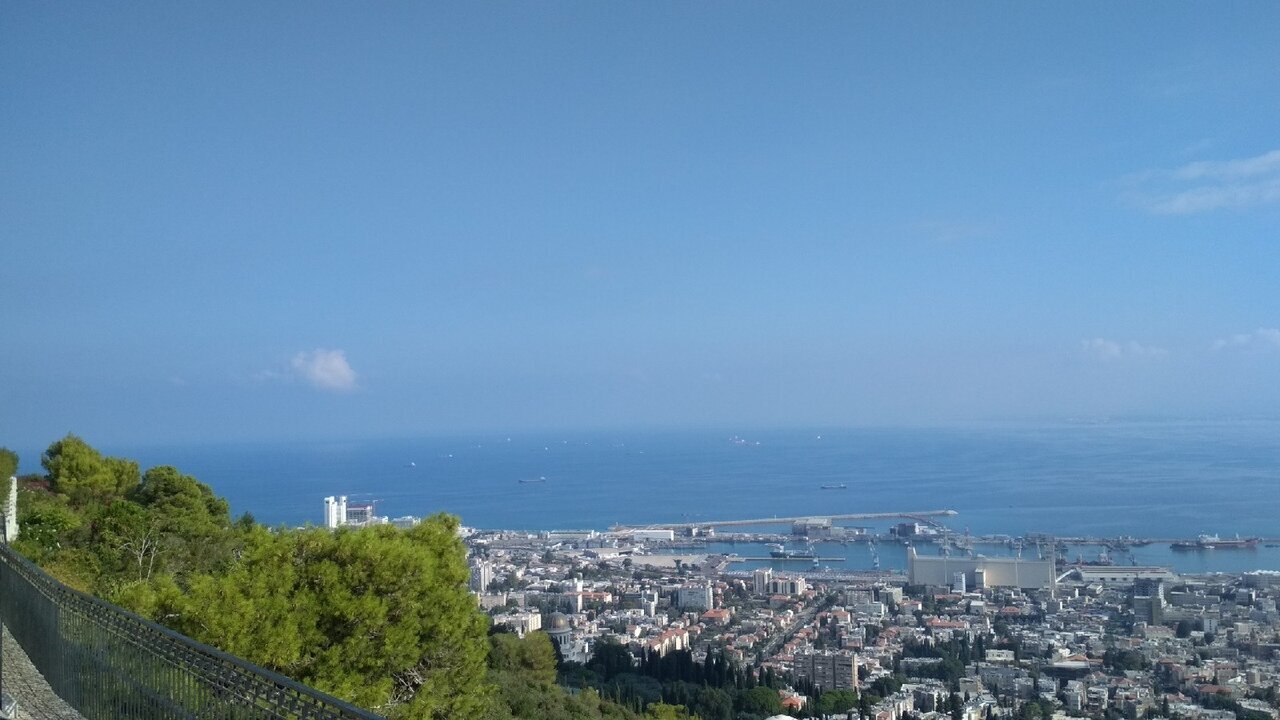
Bahai Gardens
The most popular tourist spot in Haifa is the Bahai Gardens and Terraces. Bahai is a young religion originating from Persia. It is only 200 years old and has 5 million followers. Its «mecca» is the delightful Bahai Gardens, the heart of which is the tomb of the Báb, the founder of the religion. The building with a golden dome is mesmerizing, and inside are written texts of prayers in Persian.
Bahá'í teachings are based on the teachings of the Báb and Bahá'u’lláh: they advocated the unity of God and the unity of religions. At first the Bahá'í religion was considered an Islamic sect and the Báb was executed, but in 1925 an Islamic court in Egypt defined it as a separate religion.
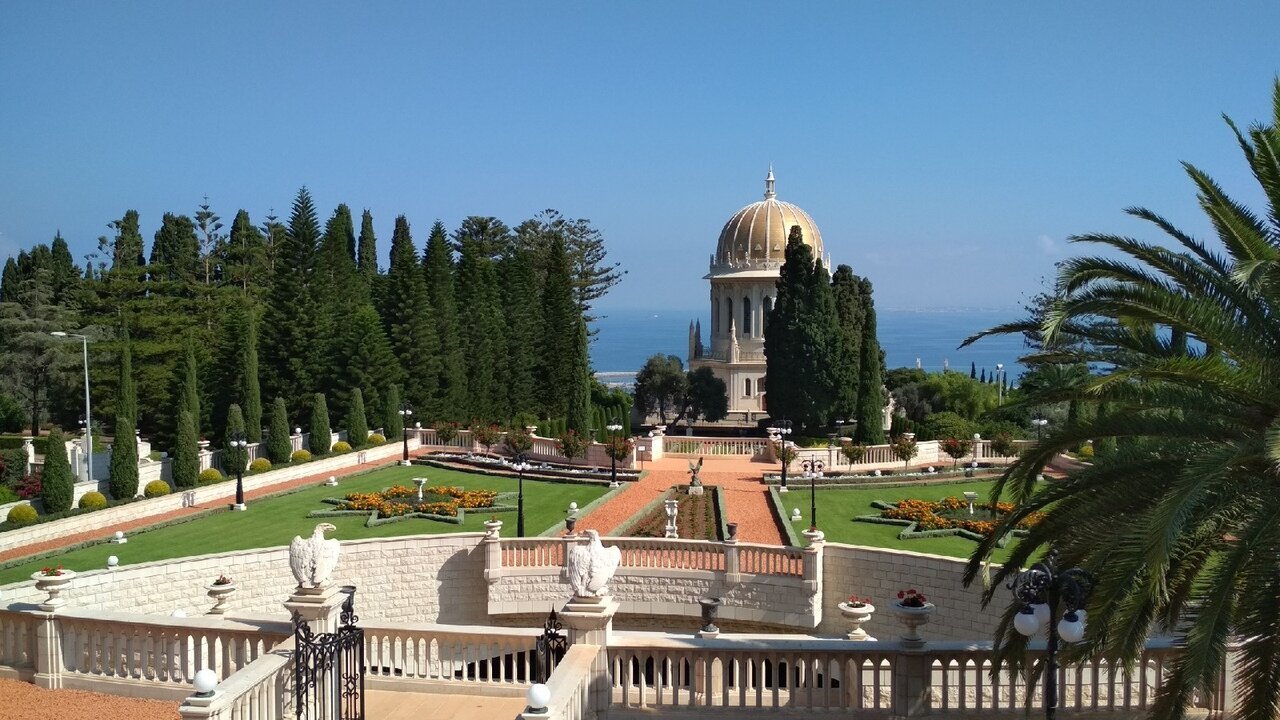
The tomb is surrounded by a magnificent park complex: 19 tiers, a huge staircase, thousands of decorations and plants. The garden was designed by architect Fariborz Sahba in 2001, and 7 years later this place was included in the UNESCO World Heritage List.
Followers of the Bahá'í faith find a place to pray and rest. And the rest of us can admire the views and the flowerbeds planted on the huge terraces. Beauty and balance are central tenets of the Bahá'í religion.
A walk through the Bahai Gardens is best started from the top. Every day there are free guided tours in different languages, including Russian. You can see the schedule at the link. To be able to get into a group, you need to arrive 15 minutes before the tour starts.
Baba’s shrine is a religious shrine. The place is asked to be treated with respect: come in closed clothes, no drinks, food, pets and turn off your phone.
The tour takes about 50 minutes, and at the end of the tour you will be offered to visit the Shrine of Bahi — be sure to accept, this place delights with its luxurious decoration!
In the gardens you can only go downstairs on a guided tour, there is no way back. You can go up the stairs outside the gardens, by shuttle bus or subway.
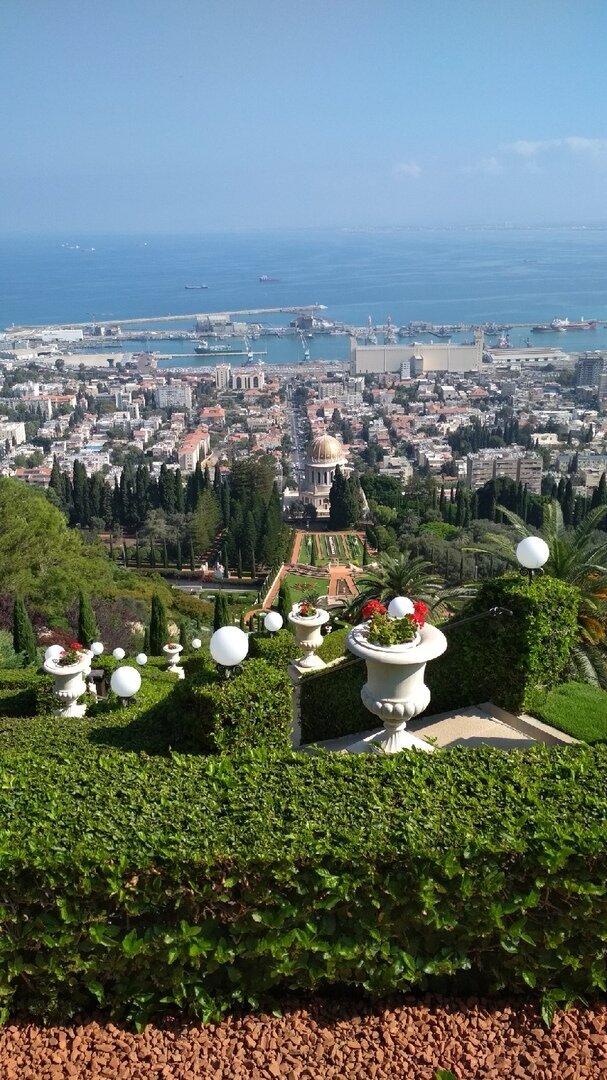
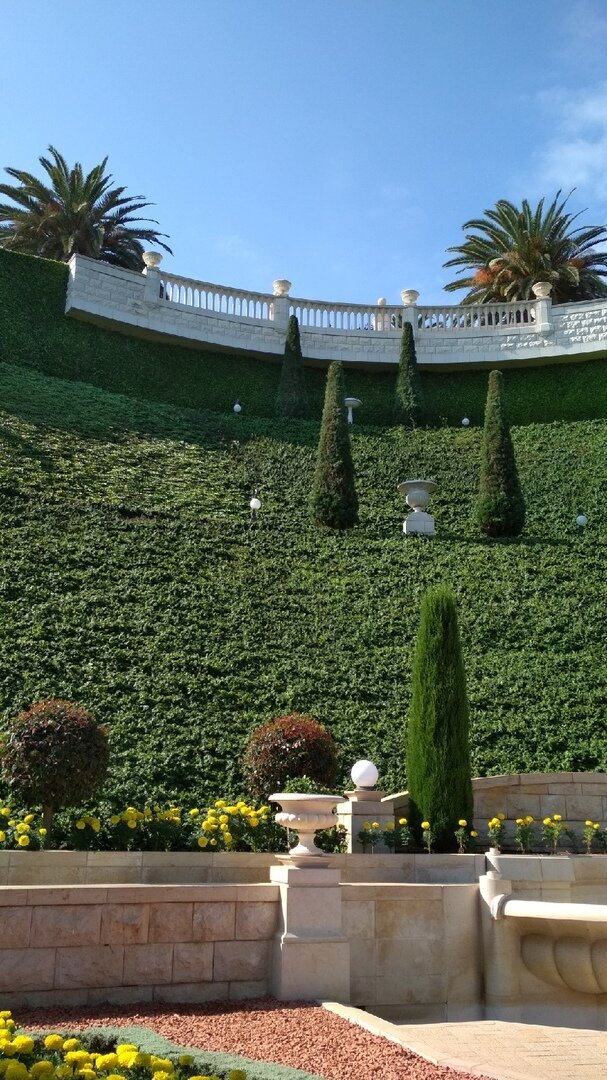


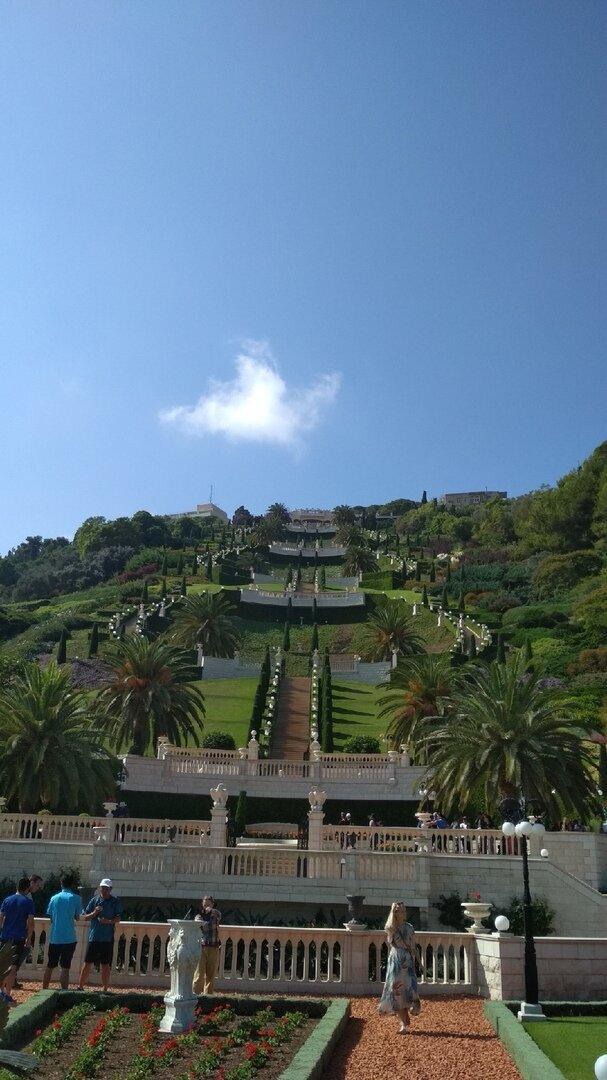
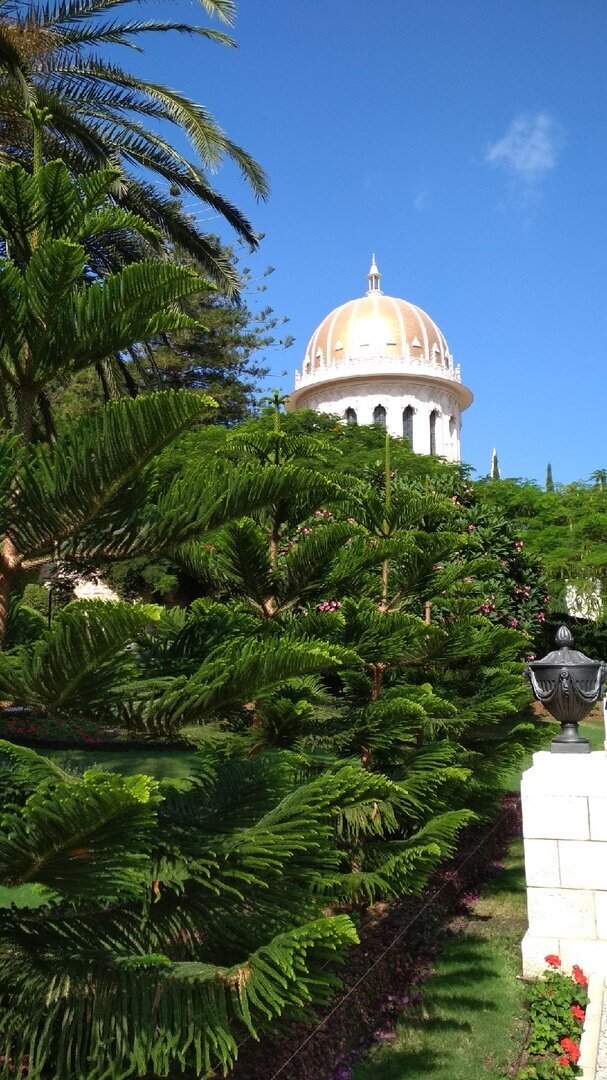
During rainy weather, on Bahá'í holy days and Yom Kippur, the gardens are closed. The holy days are counted from the Jewish calendar (Yom Kippur), and the Bahá'í Faith has its own calendar, the Badí calendar, which was introduced by the Báb. According to this calendar, a day is considered to be the time between two consecutive sunsets, and the Bahá'ís have different names for the months than the European calendar.
- Entrance is open from 09:00 to 17:00. Tours are available every day, except Wednesday, from 09:00 to 15:00.
- Official Website.
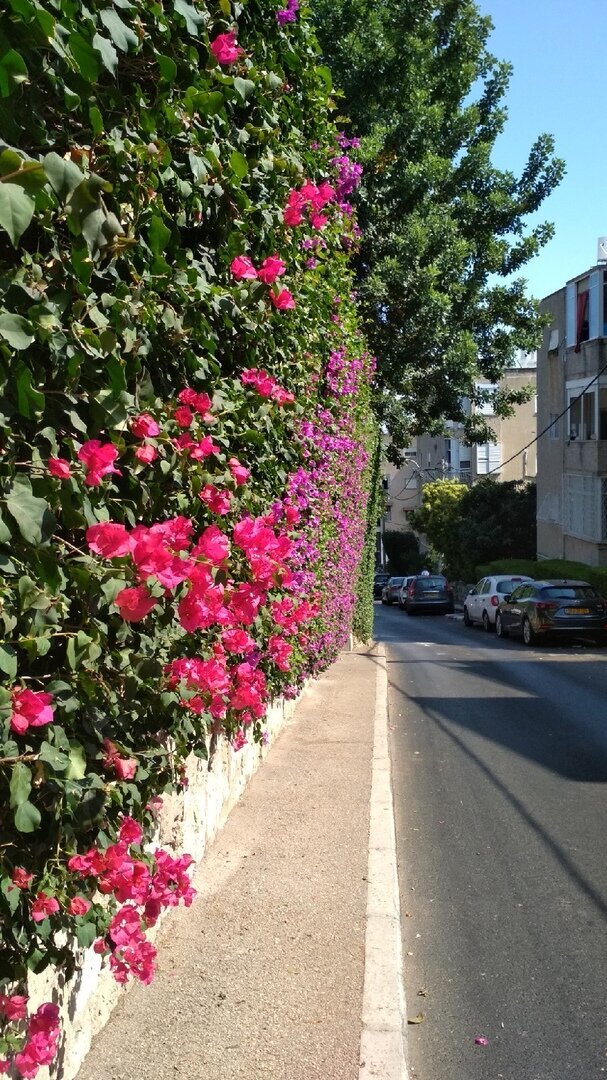
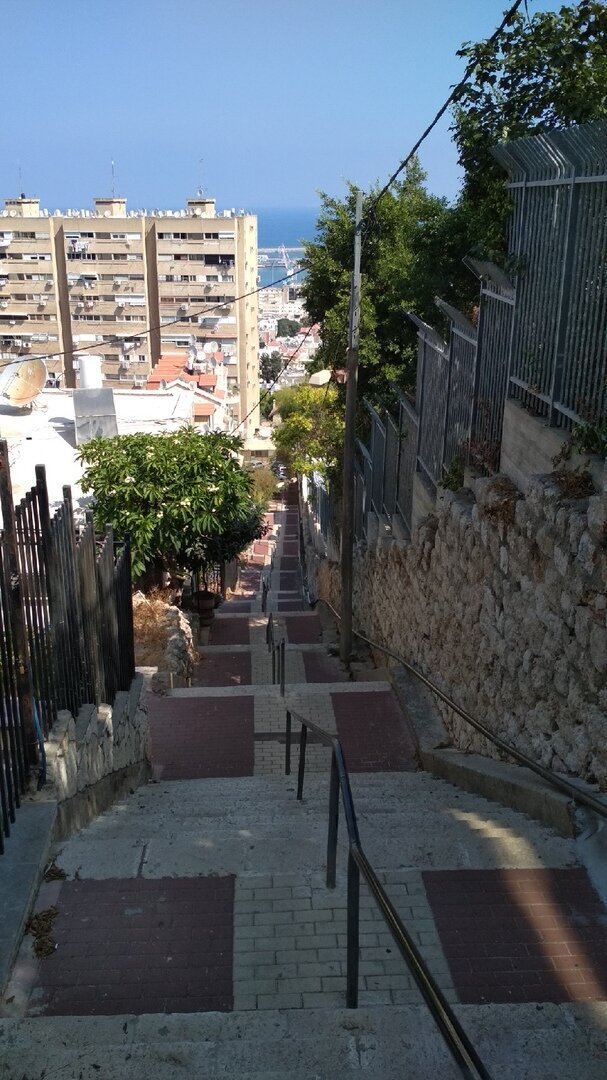
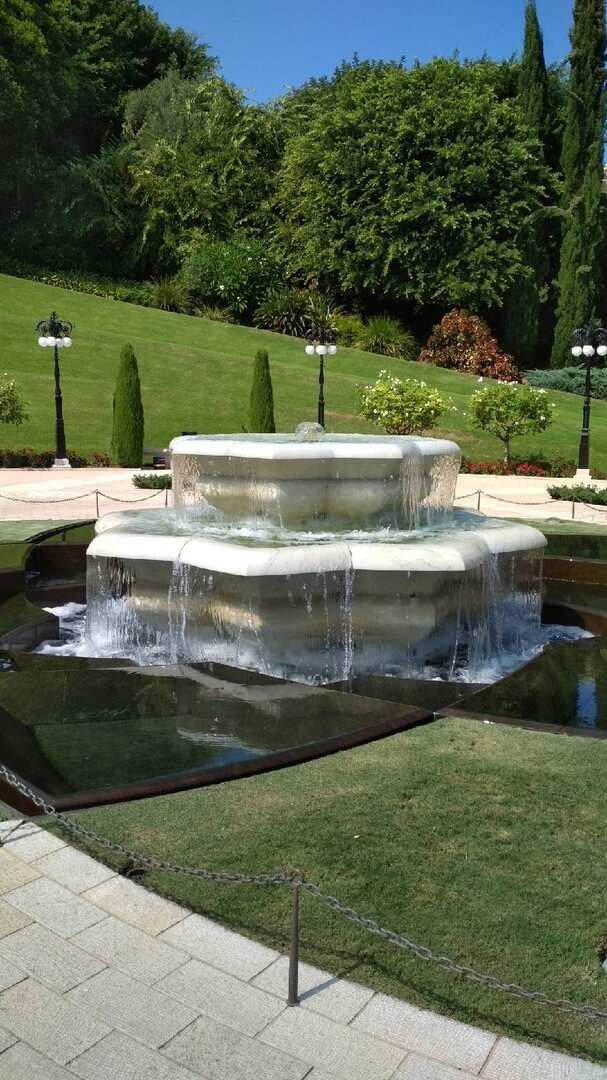
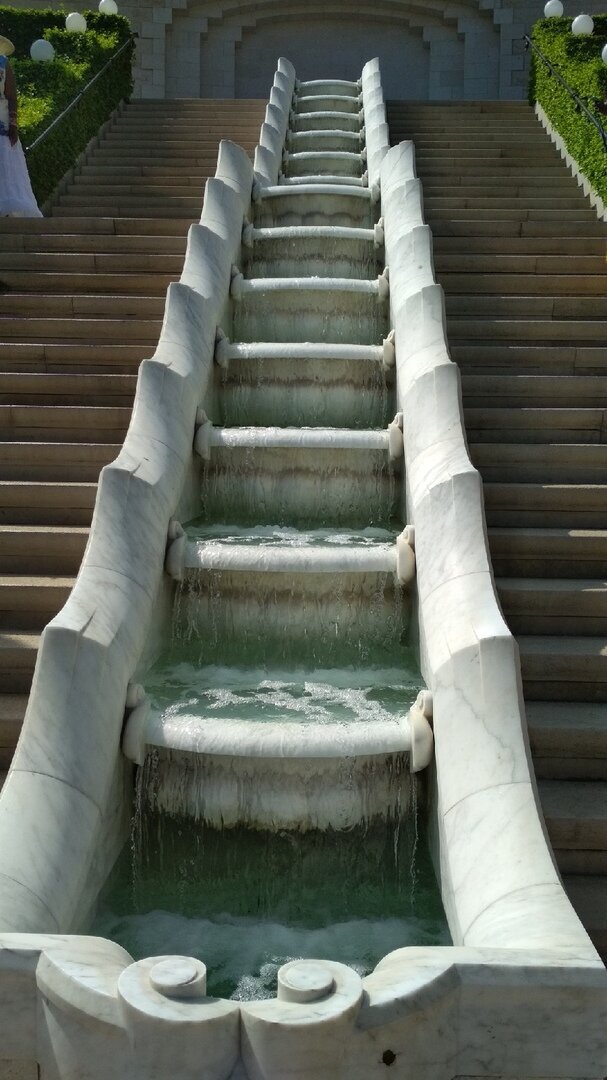
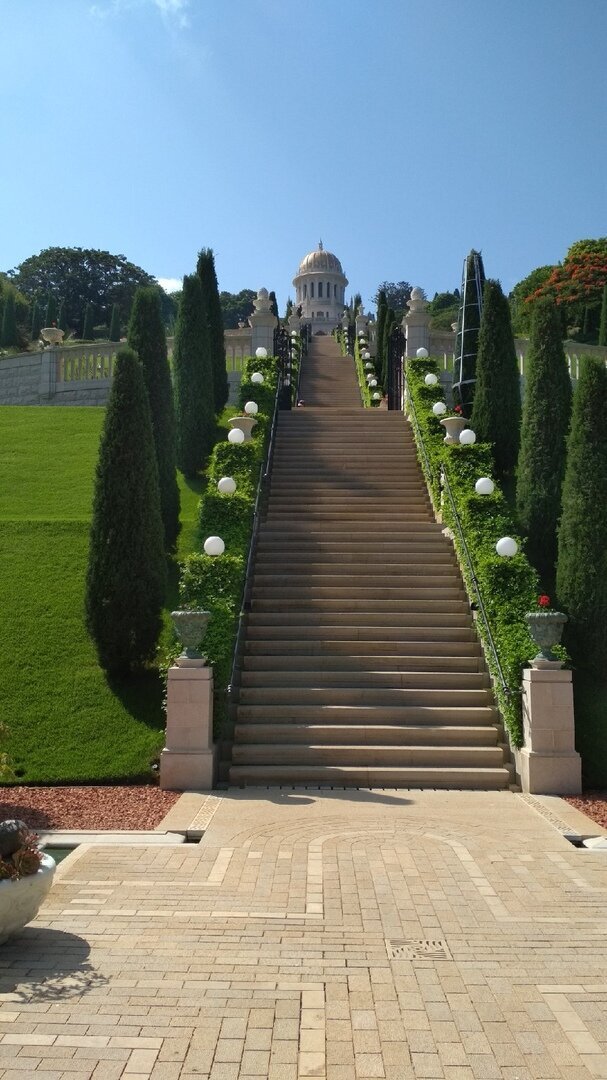
Cathedral of St. Elias (Cathedral of St. Elias)
It is a small Melkite Catholic church designed by the Arab architect Sammih Atallah. It was built in just 1 year, from 1938 to 1939. Melkites are Eastern Catholics who adhere to the Byzantine rite, so the church has a modest and discreet appearance on the outside of the cathedral, but the interior is richly decorated. The building has a small bell tower, consists of 3 naves and is decorated with mosaics.
St. Joseph’s Church (St. Joseph’s Church)
The history of this building dates back to 1948, with the establishment of the State of Israel. The Catholic Carmelite Order purchased the vacant plot of land together with the buildings and decided to erect a parish church on this site.
Many, passing by this building, pay attention to the huge cross tiled on the wall of a modern unassuming building, but not everyone guesses that inside there is a church built by Italian architect Antonio Barluzzi.
Don’t miss the opportunity to ask the caretaker to unlock the entrance to the balcony, as the view from above will allow you to look around the entire room.
You can see the church during the service, which takes place on weekdays from 17:00. At other times you can try to enter the church through the administration building, which is connected to the church by a passageway. If the door is locked, you should press the bell.
Mode of operation on the website.
German Colony (German Colony)
The German settlement is located at the bottom of the Bahai Gardens, practically in the center of Ben-Gurion Boulevard. It was established in 1868 by the Templers, a Protestant sect from Germany, who purchased the land to organize a community. A stunning view of the place is from the top of Haifa Gardens. The German colony stands out from the rest of the urban development with its sloping brick-colored roofs.
The main street of Ben-Gurion is now a wide promenade with restaurants and coffee shops. The German colony in modern Haifa is an urban neighborhood with citrus trees, discreet and comfortable courtyards.
Houses in this part of the city often have cellars, which you don’t see in other parts of the city. In these cellars, owners store wine and food for restaurants. In the Rak Basar restaurant, you can see a beautiful wine cellar through the glass floor.
The historic Templer Community House, erected in 1869, houses the City History Museum, which opened in 2000. It was the first sect building in Palestine at that time. The building is being restored, but you can see temporary exhibitions and paintings by contemporary artists.
- Haifa History Museum opening hours: Sunday — Wednesday 10:00 — 16:00, Thursday 16:00 — 21:00, Friday 10:00 — 13:00, Saturday 10:00 — 16:00.
- Official Website.
Cave of Elijah (Cave of Elijah)
One of the holiest and most famous sights in Haifa, which attracts Christians, Muslims and Jews, is the Cave of Elijah the Prophet. In the 19th century, the Turks built a stone structure over the cave; the cave itself is a karst cave, which has been expanded by human hands many times during its existence.
In this cave there is a room for private prayer, behind a red velvet screen. Women go in there separately, men separately. This place is considered holy, as is the Wailing Wall, a kind of «portal» for direct communication with the Lord.
The cave is 14 meters deep, up to 5 meters high and about 8 meters wide. Inside, the floor is covered with carpets, there are cabinets with prayer books and sacred Jewish books. On the walls are inscriptions in Greek and Hebrew, some of which date back to the 5th century BC.
The cave itself is divided into two halves: on the left is the women’s half and on the right is the men’s half. There is a partition between them with texts of prayers, images and stories about Elijah.
It is believed that in this cave one must find the right prayer, stand in front of it and recite it. But you can talk to God in your own words in any language, because all the records are in Hebrew.
Cruise ships call at Haifa’s cruise port, and tourists often come here for one day. This is enough time to see the main sights of the city. And if you have more than one day at your disposal, spend a few hours on Haifa’s beaches — they are large, sandy and easily accessible from the center.

